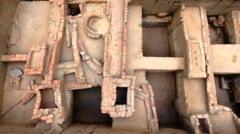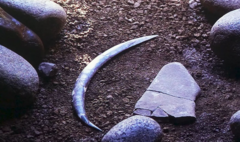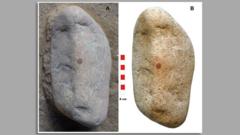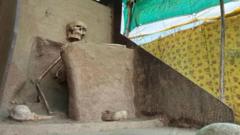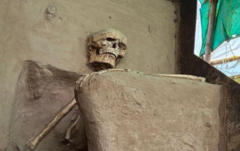In the early 20th century, Rakhaldas Banerjee (sometimes spelled Banerji) emerged as one of the most significant figures in Indian archaeology, credited with the discovery of Mohenjo-daro, "the mound of the dead men," situated in present-day Pakistan. This site was a vital part of the extensive Indus Valley Civilization, which thrived during the Bronze Age across what is now north-eastern Afghanistan and north-western India.
Banerjee, an accomplished explorer and epigraphist, was part of the Archaeological Survey of India (ASI) when the subcontinent was under the rule of the British Empire. His resolute explorations sought out ancient artifacts and historical remains across the subcontinent. Despite his revolutionary accomplishments in archaeology, his career was fraught with conflicts, often overshadowing his contributions.
Reports suggest that the ASI never published Banerjee's findings on Mohenjo-daro, with allegations that his superior, John Marshall, garnered undue credit for the discovery and its associated findings. Archaeologist PK Mishra argues that while Marshall's name is widely recognized in academic circles, Banerjee is little more than a footnote in history. This narrative is echoed by historian Nayanjot Lahiri, who highlights Banerjee's inability to navigate the bureaucratic tensions of his time and his tendency to clash with authority figures.
Despite his independent spirit that occasionally led to controversy — including attempts to secure artifacts without proper protocol, insubordinate spending of excavation funds, and even the circumstances surrounding a theft accusation controversy — Banerjee's achievements are appreciated among scholars, particularly in Bengal. Born in 1885 to an affluent family, Banerjee developed an early interest in history and pursued higher education with a focus on archaeology.
His career with the ASI began in 1910 as an excavation assistant, quickly climbing the ranks to become a superintending archaeologist by 1917. It was during this period, specifically in 1919, that he first excavated Mohenjo-daro, uncovering insightful artifacts like coins, seals, and ancient relics, thus deepening understanding of the Indus Valley's complex society.
Researching the site's ruins between 1922 and 1923 revealed evidence of urban settlements that existed over 5,300 years ago, further establishing the Indus Valley civilization's vast reach across an area of approximately 386,000 square miles. However, by 1924, due to financial constraints and internal disagreements over his spending, Banerjee requested a transfer away from Mohenjo-daro.
Later, while working in eastern India, he faced serious allegations concerning the theft of a sacred idol during an official visit to a Hindu shrine. Although the investigation cleared him of any wrongdoing, the case soured relationships at ASI, leading to his resignation.
In the years following his exit from ASI in 1927, Banerjee struggled with financial issues despite his rich lifestyle. He secured a position as a professor at Banaras Hindu University in 1928, but passed away prematurely at 45, his pioneering legacy overshadowed by the controversies of his life.
Rakhaldas Banerjee may have been left on the margins of historical recognition, but his adventures and discoveries played a pivotal role in uncovering the secrets of one of the world's oldest civilizations.









